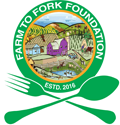Ralstonia solanacearum: A threat to potato production in Bangladesh
DOI:
https://doi.org/10.5455/faa.280361Keywords:
Ralstonia solanacearum, Potato, economic impact, biology, strategy, dispersal, survival, influenceAbstract
Potato is one of the most important vegetable crops in Bangladesh which made it 7th producer in the world. This vegetable crop is affected by one of the most notorious soil borne pathogen, Ralstonia solanacearum and caused wilt symptoms in plant and brown rot in potato tuber throughout the world. The pathogen entered into the plants through different natural opening and wounds and is easily disseminated via infected biological material (seeds, vegetatively propagative materials, plants etc.), soil, contaminated irrigation water, surface water, farm equipment etc. and could survive for many years in association with alternate hosts. The bacteria is a quarantine organism being economically a serious problem for potatoes and other major crops in many tropical, subtropical and warmer areas of the world. It has an unusually wide host range including economically important crops (potato, tomato, tobacco, banana, ginger, geranium etc.) and weeds. The disease appeared as rapid and fatal wilting symptoms in the potato plants and vascular browning and/or rotting on tubers. The pathogen can be detected through the isolation of the bacteria on semi-selective TZC and/or selective SMSA (modified) media and through different biochemical tests and/or molecular test. It is a Gram-negative type bacterium, subdivided into five races based on host range and race 3 biovar III is reported in Bangladesh. Direct yield losses caused by R. solanacearum may vary 33 to 90% depending on the different factors such as cultivar, climate, soil type, cropping pattern, strain of the bacteria etc. Due to the latent infection of tuber by this organism, Bangladesh had been facing a temporary embargo on potato export which was imposed by Russia during 2014-15. But, latency and some other survival strategy of the pathogen created much more problems with disease detection, control and dispersal. The biological features of this pathogen makes it unusually successful against the traditional management practices. Therefore, the review focused on the biological abilities of R. solanacearum in relation to dispersal, survival and influences which might be important in designing effective management against the pathogen.
Downloads
Downloads
Published
How to Cite
Issue
Section
License
Copyright (c) 2018 by the author(s). This work is licensed under a Creative Commons.

This work is licensed under a Creative Commons Attribution-NonCommercial 4.0 International License.




















